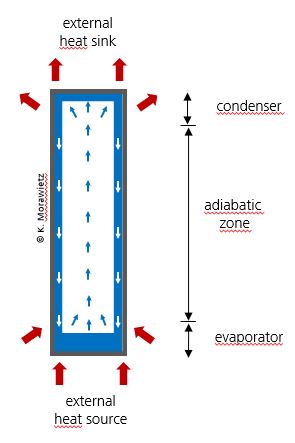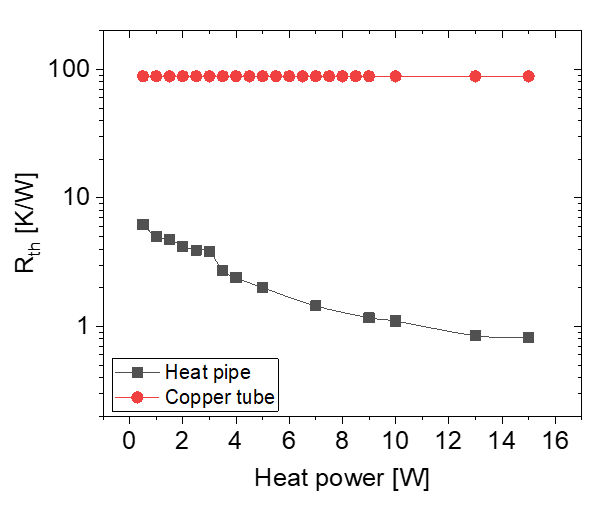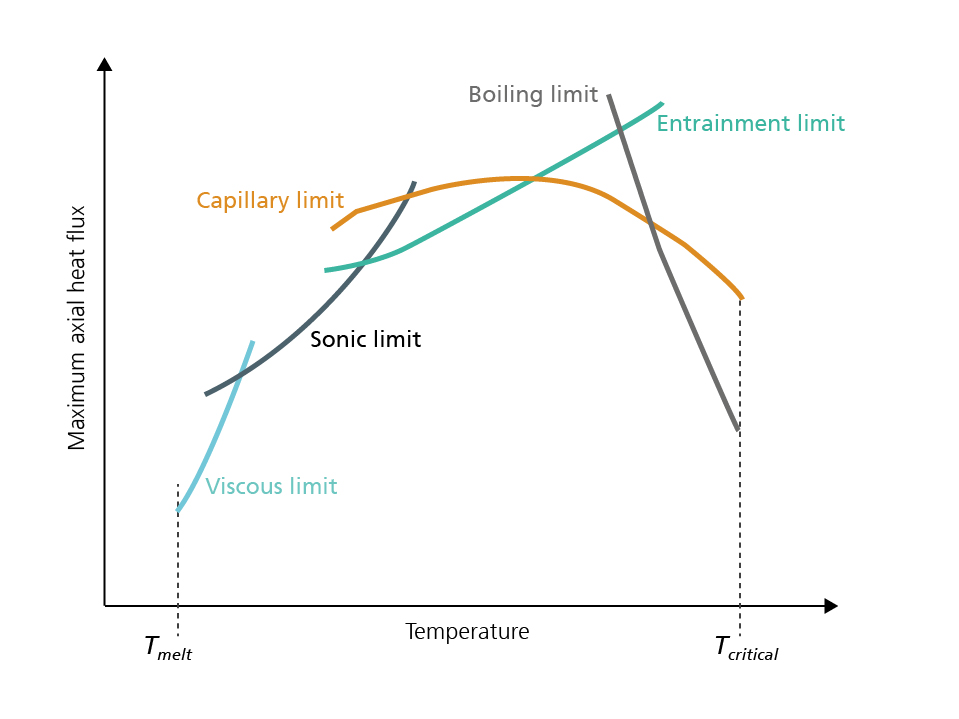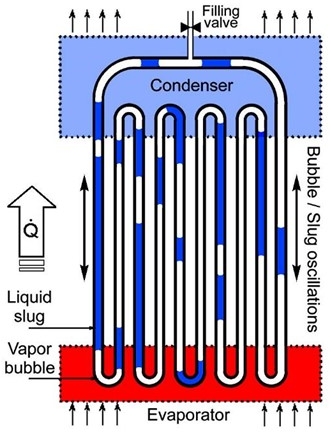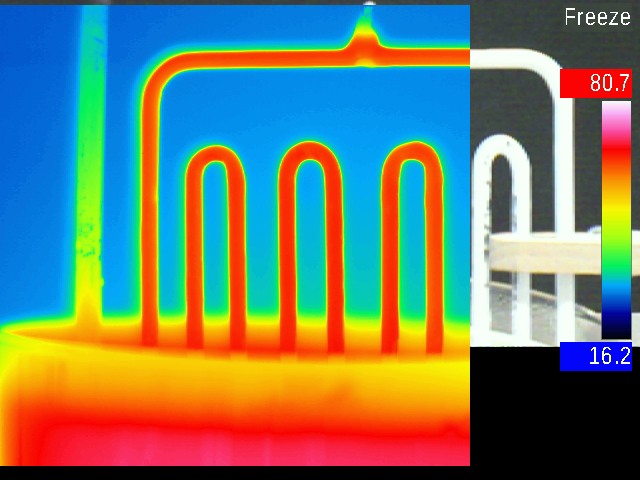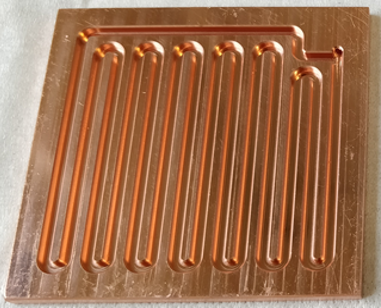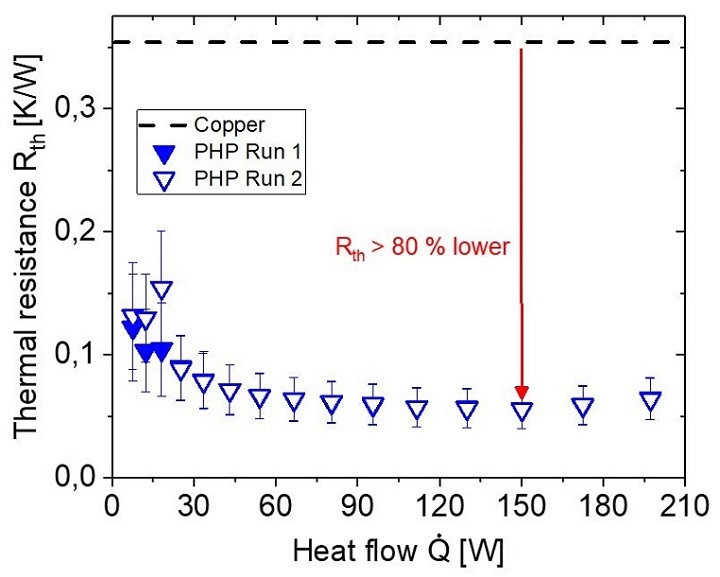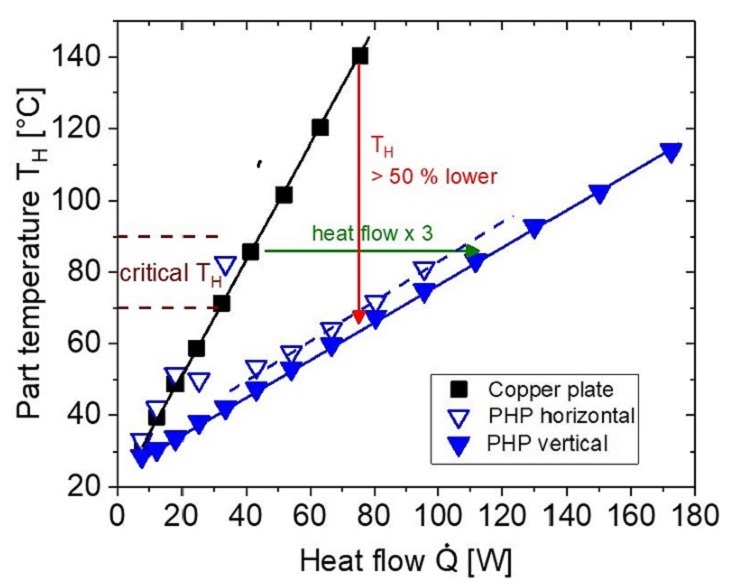Conventional heat pipes – evaporation and condensation
Heat pipes are components that can transfer heat via an evaporation and condensation circuit. When heat is applied to one end of the heat pipe, a working fluid evaporates and flows along the adiabatic zone to the condenser, driven by the temperature or pressure gradient. At the condenser, the vapor condenses and releases its latent heat to an external heat sink
To maintain the cycle, the condensate must be fed back to the evaporator. For this purpose, an integrated wick structure (e.g. groove, mesh or sinter structures) is usually used to transport the condensate back to the evaporator using capillary force. If the condenser is located above the evaporator, gravity can also be used for the return transport. This is called a two-phase thermosiphon. The use of other forces, such as centrifugal forces, is also conceivable for the return of the working fluid.
The working fluid used depends on the temperature range in which the heat pipe is to be used. The most common applications are in the range of approx. -100 to 300 °C. Fluids such as ethanol, acetone or water are typically used here.
 Fraunhofer IPM | Fraunhofer ISE
Fraunhofer IPM | Fraunhofer ISE